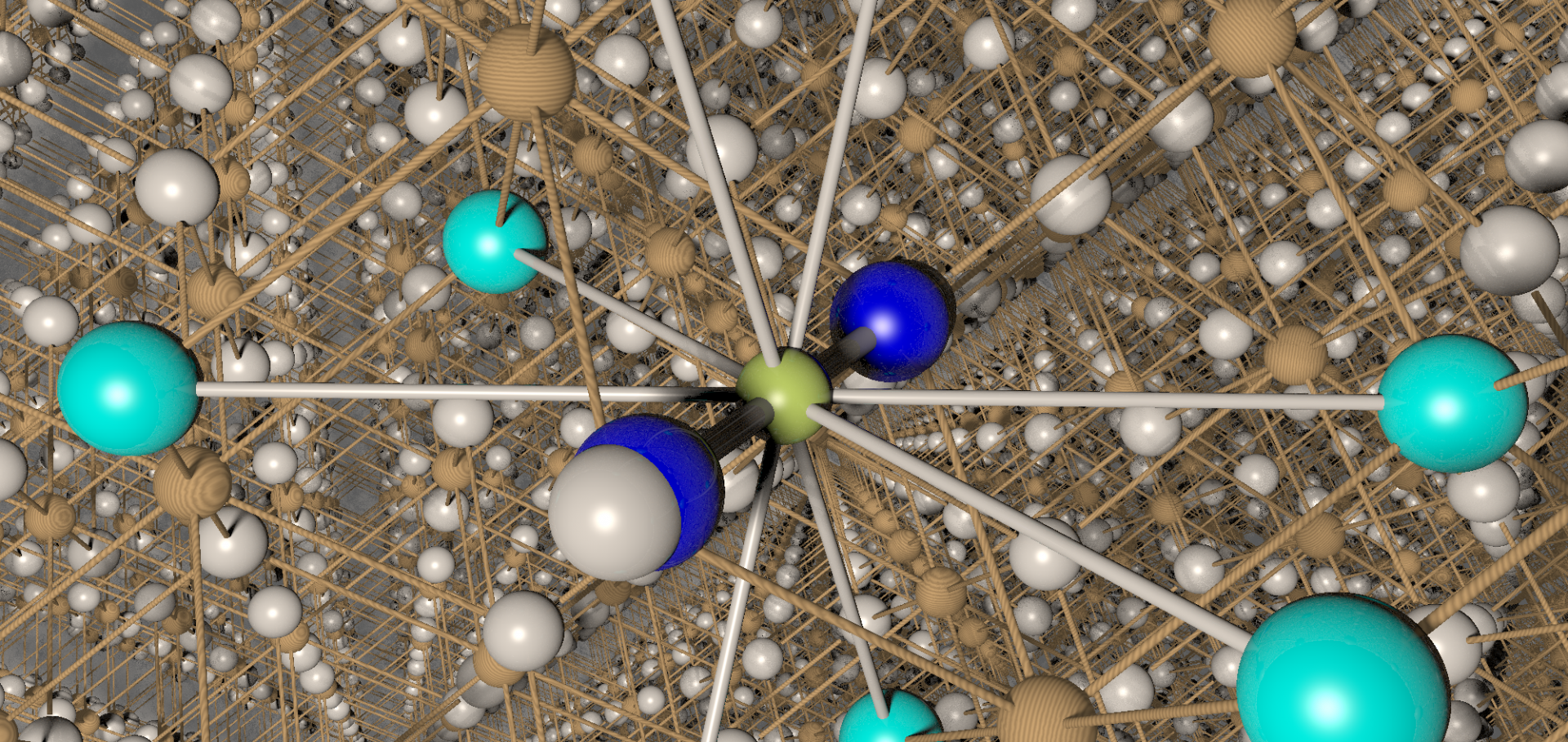Numerical model of quantum oscillations in quasi-two-dimensional organic metals in high magnetic fields.
Phys Rev B Condens Matter 54:14 (1996) 9977-9987
A study of the magnetoresistance of the charge-transfer salt (BEDT-TTF)3 Cl2 · 2H2 O at hydrostatic pressures of up to 20 kbar: Evidence for a charge-density-wave ground state and the observation of pressure-induced superconductivity
Journal of Physics Condensed Matter 8:33 (1996) 6005-6017
Abstract:
The magnetoresistance of single crystals of the quasi-two-dimensional (Q2D) organic conductor (BEDT-TTF)3Cl2 2H2O has been studied at temperatures between 700 mK and 300 K in magnetic fields of up to 15 T and hydrostatic pressures of up to 20 kbar . Measurements of the resistivity using a direct-current van der Pauw technique at ambient pressure show that the material undergoes a metal-to-insulator transition at ̃150 K; below this temperature the resistivity increases by more than five orders of magnitude as the samples are cooled to 4.2 K. If the current exceeds a critical value, the sample resistivity undergoes irreversible changes, and exhibits non-ohmic behaviour over a wide temperature range. Below 30 K, either an abrupt increase of the resistivity by two orders of magnitude or bistable behaviour is observed, depending on the size and/or direction of the measurement current and the sample history. These experimental data strongly suggest that the metal-insulator transition and complex resistivity behaviour are due to the formation of a charge-density wave (CDW) with a welldeveloped domain structure. The magnetotransport data recorded under hydrostatic pressure indicate that pressure has the effect of gradually reducing the CDW ordering temperature. At higher pressures, there is a pressure-induced transition from the CDW state to a metallic, superconducting state which occurs in two distinct stages. Firstly, a relatively small number of Q2D carriers are induced, evidence for which is seen in the form of the magnetoresistance and the presence of Shubnikov-de Haas oscillations; in spite of the low carrier density, the material then superconducts below a temperature of ̃2-3 K. Subsequently, at higher pressures, the CDW state collapses, resulting in QID behaviour of the magnetoresistance, and eventual suppression of the superconductivity.Colossal magnetoresistance in Sr2-x Nd1+x Mn2 O7 (x = 0.0, 0.1)
Journal of Physics Condensed Matter 8:32 (1996)
Abstract:
Magnetization and magnetotransport measurements have been used to study the composition dependence of the electronic properties of the Ruddlesden-Popper phases Sr2NdMn2O7 and Sr1.9Nd1.1Mn2O7. Although their behaviour differs in detail, both compounds show a colossal magnetoresistance (CMR) effect (>10 000% in 14 T) in the temperature range 4.2 ≤ T/K ≤ 100. However, neither material shows a transition to a ferromagnetic state above 4.2 K, and both materials have higher resistivities (>103 Ω cm for 4.2 ≤ T/K ≤ 100) than the metallic oxides previously found to show CMR. In view of the low conductivity and the absence of ferromagnetism, the CMR of these phases is not readily explained by a doubleexchange mechanism.Interplay of magnetism and superconductivity in thulium and lutetium nickel-borocarbides
Physica B: Condensed Matter 223-224:1-4 (1996) 69-71
Abstract:
Implanted muon spectroscopy shows that magnetic order coexists with superconductivity in TmNi2B2C. The muon response indicates that large amplitude fluctuations of the internal field are superimposed on a relatively small static component. The static field exhibits an unusual temperature dependence which shows no interruption at the superconducting transition and may represent evolution of a staggered or spiral arrangement of Tm moments. The dynamic component changes its spectral density at the superconducting transition and the question arises as to whether this is associated with Ni moment formation and fluctuation. In LuNi2B2C, where the rare earth ion is nonmagnetic, no signature of static order is seen. An intriguing change in the muon response does occur below about 4 K in this material; this seems suggestive of Ni moment fluctuation, although the evidence is not entirely conclusive.Muon-spin-relaxation studies of magnetic order in heavily doped La2-xSrxNiO4+ delta.
Phys Rev B Condens Matter 53:22 (1996) R14725-R14728


